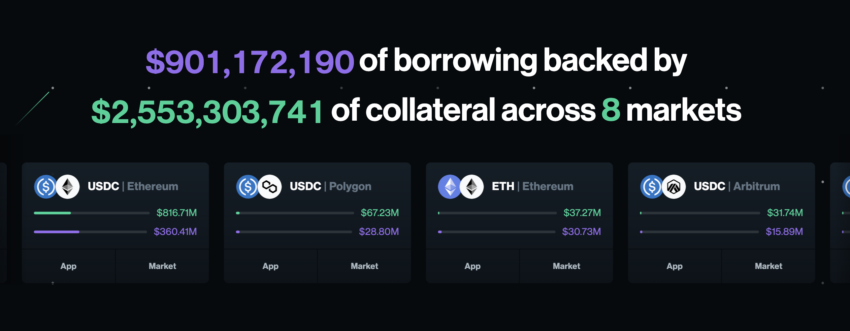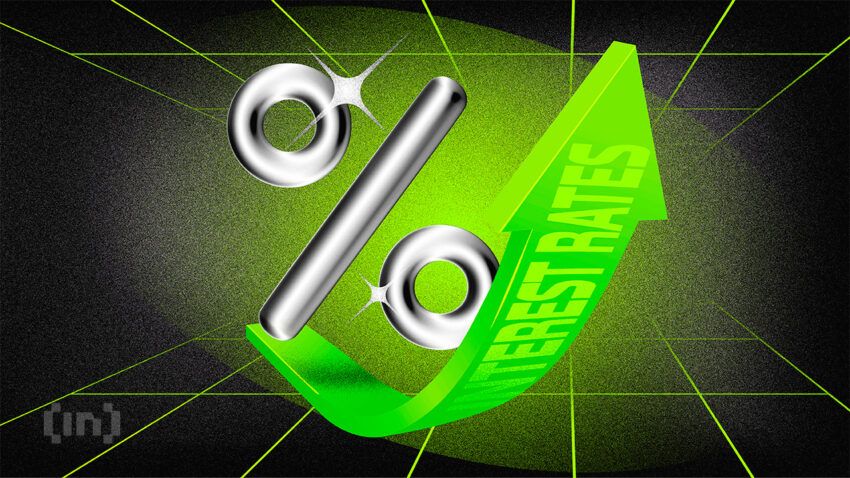Yield farming is a concept that has gained significant traction in the cryptocurrency domain, but what exactly does it entail, and how beneficial is it? This comprehensive guide delves into the intricacies of yield farming within the realm of digital currencies. We’ll examine its mechanisms, evaluate its potential rewards and risks, and highlight its intricacies.
Best platforms for yield farming
There are various platforms for yield farming. Let’s get into a few.
1. PancakeSwap

Operating as a DEX, PancakeSwap is built on the Binance Smart Chain. It functions similarly to other automated market maker platforms, enabling users to engage in direct cryptocurrency trading from their digital wallets without relying on intermediaries.
Through the liquidity pool model, PancakeSwap allows users to contribute their tokens to different liquidity pools, which in turn facilitates trading activities. By staking LP Tokens, users can use Yield Farms to earn CAKE while supporting PancakeSwap.
Liquidity providers earn fees proportional to their share of the total pool on trades executed within their respective pools. This mechanism incentivizes users to contribute liquidity to the platform and participate in its ecosystem.
Trading fees on PancakeSwap can be as low as 0.2% per trade, making it a more affordable option for frequent traders looking to cut costs.
2. Bake (ex. Cake DeFi)

CakeDeFi is a user-friendly platform that caters to all your DeFi requirements. It is a fintech company based in Singapore that brings together multiple DeFi applications and services into one platform.
This yield farming app offers Staking, Borrowing, Yield Mining, and YieldVault as its key products. YieldVault allows investors to earn high returns on their crypto assets by utilizing DeFiChain vaults and leveraging negative interest rates.
Staking, Borrowing, and Yield Mining function exactly as their names imply, providing users with additional ways to maximize their earnings. CakeDeFi offers a staking service tailored for intermediate level investors. It requires ETH, DASH*, MATIC, SOL, or DFI (the native cryptocurrency of the DeFiChain blockchain).
Liquidity Mining, in simple terms, allows crypto investors to earn rewards by providing liquidity to a decentralized exchange. For those who want to maintain ownership of their crypto assets but need funds to support their cash flow, Cake DeFi’s “Borrow” service enables them to use their assets as collateral and receive the necessary funds.

Aave is a non-custodial liquidity platform for lending and borrowing cryptocurrencies. It supports various stablecoins and other assets, such as DAI, USDT, BAT, and yearn.finance.
The website’s main page provides an overview of supported assets. Here, you can see the market size, total amounts borrowed, and yearly interest paid on depositing assets as well as borrowing them. Also, you can see these values in USD or their native amounts – an ideal choice for investing experts.
Whenever you lend on Aave, you’ll earn “aTokens.” These are basically Aave versions of the token you’re lending and are provided as an additional reward on top of the interest you earn. The longer you lend, the more tokens you’ll receive.
These aTokens are tied at a 1:1 ratio with their named asset, and you can even redirect the rewards off the platform to another ERC-20 address if you’d prefer.
4. Compound

Compound is very similar to Aave at first glance. This platform offers lending and borrowing for many of the same assets, for example. Compound also provides a ton of information, such as supply annual interest rates, total supply on the liquidity pool, and more.
What makes Compound stand out, however, is its implementation on other cryptocurrency platforms. For example, you can earn the platform’s COMP token via assets stored in your Coinbase or Ledger wallets. This saves you time and money as you don’t need to pay transaction fees for moving assets into the Compound Wallet.
Additionally, it has also partnered with various cryptocurrency custodians, ensuring your assets are reliably managed by trusted parties.Finally, cryptocurrency taxes can be a pain, even without factoring in lending and borrowing. But, Compound integrates with popular crypto tax platforms Tokentax and Cointracker, providing an easy export into these databases. If you get really involved with yield farming on Compound, this will certainly make your tax life easier.
5. Uniswap

Uniswap was one of the first borrowing and lending platforms to take off during the big DeFi boom. The exchange supports over 200 integrations with decentralized finance platforms such as Compound, Aave, and even the centralized platform Coinbase.
The platform is on its third version, which offers something unique called concentrated liquidity. Essentially, normal lending puts you in the range of anywhere from 0 to infinity. However, concentrated liquidity allows you to provide assets within a certain price range – often the range they typically sit in. This earns lenders more in rewards, as they’re lending at a higher, concentrated value than the traditional method.
Otherwise, you can enjoy many benefits aside from Uniswap’s liquidity pool. The platform offers governance based on its UNI token, swaps for all types of cryptos, and various chart information both lenders and borrowers can take advantage of.
6. Balancer

Balancer is an interesting platform as it enables anyone to trade Ether against ERC-20 tokens in a liquidity pool they create. A created pool contributes to the overall balancer liquidity and rewards you in the platform’s BAL token.
This method is also called an Automated Market Maker (AMM). Basically, in a created pool of two assets, the liquidity is going to move around as users borrow, lend, and withdraw assets from it. This activity, of course, consistently changes the price of assets within said pool. To counteract this, Balancer automatically converts assets through pools that create the best user value.
For instance, a trade from ETH to DAI might go through a USDT pool if ETH and DAI are drastically shifting. This saves all parties money over time, and the process is entirely automatic, thanks to smart contracts. Also, lenders can make more money based on the pool they’re in. This is because pool lenders can customize fees anywhere from 0.0001% to 10% if they see fit.
Balancer also provides support for up to eight tokens in one liquidity pool. Since the platform is an AMM, the prices are automatically reworked as they need to be, which makes such a pool possible. Of course, it also rewards you with BAL as you contribute, as most liquidity platforms do.
The platform is looking to upgrade to 2.0 quite soon, however. This change will bring lower gas fees and allow for custom AMM logic in liquidity pools, asset managers within the platform, and more.
7. Sushiswap

Finally, we have Sushiswap. This liquidity platform is actually a hard fork of Uniswap, meaning it’s also an AMM. The protocol supports various assets not listed on other providers, making it quite appealing to experienced providers and borrowers.
By providing liquidity, lenders yield SUSHI as a reward. They can then take those rewards and place them in the SushiBar for staking, which earns them xSUSHI to profit even more. xSUSHI is an asset minted when investors buy SUSHI, utilizing transaction fees to do so.
What is yield farming?
Yield farming is the process of staking your cryptocurrencies to earn more of them as passive income. Essentially, you’re adding liquidity to a platform and earning rewards in the form of interest for doing so.
The process is similar to holding traditional fiat in a savings account. Money held in a savings account is used in the bank’s general liquidity pool. Banks utilize that pool for lending and providing money to customers. Yield farming is the same idea, only you’re contributing to a lending platform rather than a bank.
All loans are held in a smart contract, which requires the borrower to put up collateral before accepting. Once they pay the loan back, you earn interest on your tokens as well as crypto farming from the platform.
Yield farming is part of what makes decentralized finance go around. There are various platforms to do such trading, like Compound and Aave, for example. If you lend on Compound, you’ll earn interest on your lent assets as well as Compound tokens for using the platform.
If you know what cryptocurrency staking is via the proof-of-stake consensus algorithm, such as what Ethereum is upgrading to with its 2.0 format, you pretty much know what yield farming is.
How to start yield farming
To start yield farming, you need to sign up on a liquidity pool like Aave. You’ll also need to hold assets, generally Ethereum or ERC-20 tokens, in your connected wallet. A popular ERC-20 wallet to use is MetaMask in this instance.
Then, you’ll pick the liquidity pool of whichever asset you wish to lend, and input the desired amount. The platform will state any fees as well as projected earnings. Once you’ve contributed to the liquidity pool, it’s time to start earning.
Rewards will be paid out at a minimum threshold, which varies based on the lending platform and asset you choose. Borrowers also have some say in the amount and length of their minimum payments. Also, keep in mind that you’ll need to dedicate a significant amount of liquidity to see any meaningful returns.
Is farming crypto worth it?
“As cryptocurrency gains wider acceptance, yield farming will enter the mainstream. Like traditional banking practices, this simple concept is essentially a digitalized form of lending with interest, providing a means for investors to generate profit.”
Daniel R. Hill, president of Hill Wealth Strategies: LinkedIn
Many would argue farming cryptocurrency is very worth it, considering you’re earning interest on cryptocurrencies that were just sitting in your wallet in the first place.
Depending on how much you lend, farm yield is especially worth it because you’re almost guaranteed profit. Farming isn’t nearly as risky as day trading, which could result in you losing all of your funds.
What is crypto farming and staking?
Crypto farming and staking is the act of storing or locking up your assets into a wallet via smart contract. Those assets are then used to fulfill the contract and can be released back to you after that. Generally, stakers and farmers earn interest on their cryptocurrencies, making your crypto work for you.
How do you yield crypto farming?
When you engage in crypto yield farming, you earn rewards over a specified period of time. The amount you receive as payouts depends on the platform you choose, with each offering different rates and terms, but generally, committing your assets leads to earning potential.
Additionally, the success of yield farming often hinges on market conditions and the performance of the underlying assets. It’s important to consider these factors, along with platform-specific risks and rewards, to make informed decisions. This approach not only optimizes your earnings but also helps in managing the inherent risks associated with yield farming.
Mastering the art of yield farming
Now that you’re informed about yield farming and the optimal platforms for it, you’re well-equipped to navigate this complex, sometimes daunting, but potentially lucrative domain. Understanding the risks and rewards, keeping abreast of market trends, and choosing the right platform are crucial steps in your yield farming journey. By doing so, you can maximize your opportunities for profit while managing potential risks in this dynamic area of finance.
Frequently asked questions
What is yield farming?
How does yield farming work?
What are the risks and rewards of yield farming?
How do you maximize yield farming?
What are the different types of yield farming?
How to calculate yield?
What is the difference between yield and actual yield?
Can you make money yield farming?
Trusted
Disclaimer
In line with the Trust Project guidelines, the educational content on this website is offered in good faith and for general information purposes only. BeInCrypto prioritizes providing high-quality information, taking the time to research and create informative content for readers. While partners may reward the company with commissions for placements in articles, these commissions do not influence the unbiased, honest, and helpful content creation process. Any action taken by the reader based on this information is strictly at their own risk. Please note that our Terms and Conditions, Privacy Policy, and Disclaimers have been updated.




